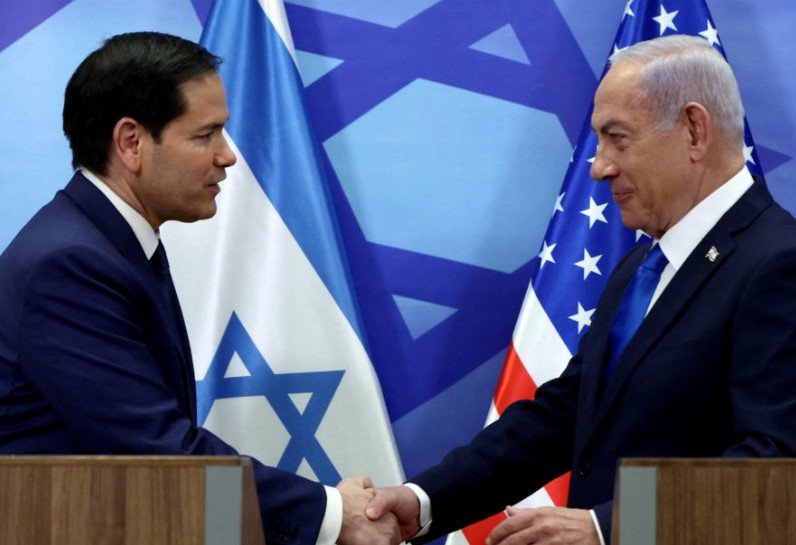Delegations from Hamas, Israel, and the United States started crucial talks in Cairo on October 6, 2025, to discuss President Donald Trump’s proposed peace plan for Gaza. This meeting aims to end the ongoing war that has killed over 67,000 Palestinians and wounded about 170,000 others since it began nearly two years ago.
The talks follow Hamas’s partial agreement to key parts of the plan last week, including hostage releases and a possible ceasefire. World leaders watch closely as this could mark a turning point in the conflict.
Key Details of Trump’s 20-Point Peace Plan
Trump unveiled his 20-point plan last week at the White House. It focuses on stopping the fighting and rebuilding Gaza.
The plan calls for an immediate ceasefire and the release of all Israeli hostages held by Hamas. In return, Israel would free over 1,000 Palestinian prisoners.
It also demands full disarmament of Hamas and a gradual pullout of Israeli troops from Gaza. A transnational authority, possibly led by the US, would oversee Gaza’s governance during the transition.
Humanitarian aid would surge into the region, with billions in reconstruction funds promised from international donors. Trump has pushed for quick action, setting deadlines to avoid more bloodshed.
Experts say the plan stands out because it addresses post-war rule in Gaza, unlike past proposals that stalled on details.

Latest Updates from Cairo Negotiations
Talks kicked off in Cairo with high-level officials from all sides. US envoys, including Senator Marco Rubio, joined Israeli Prime Minister Benjamin Netanyahu’s team and Hamas representatives.
Hamas has shown willingness to release remaining hostages but seeks more talks on issues like borders and governance. Netanyahu hopes for all hostages back by October 13, according to recent statements.
Bombing in Gaza has eased slightly since Hamas’s response, but reports show Israel killed about 70 people in strikes over the weekend despite Trump’s call to stop.
A senior US official noted growing optimism, with Arab nations like Egypt and Qatar supporting the process. Technical teams work on final details, aiming for a first-phase deal this week.
The international community praises the effort, with figures like former UK Prime Minister Tony Blair set to join a proposed Board of Peace to monitor progress.
Challenges and Potential Roadblocks
Not everyone agrees the plan will succeed. Critics point out vague timelines and enforcement issues in the 20-point outline.
Hamas disarmament remains a sticking point, as the group sees it as giving up too much power without firm guarantees. Israel worries about security if troops withdraw too soon.
Past peace efforts, like those in 2023 and 2024, failed due to similar distrust. Regional tensions, including Iran’s influence, could derail talks.
Public opinion in Israel and Gaza is split. Polls show many Israelis support a deal for hostages, but hardliners oppose concessions.
In Gaza, residents desperate for aid hope for relief, yet fear the plan might not address root causes like occupation and poverty.
| Challenge | Description | Potential Impact |
|---|---|---|
| Disarmament Disputes | Hamas resists full surrender of arms without security assurances. | Could delay or collapse negotiations. |
| Timeline Pressures | Trump’s deadlines push for speed, but details need careful handling. | Risk of rushed agreements that fail later. |
| External Influences | Involvement from Iran or other groups might interfere. | Could escalate violence if talks stall. |
| Governance Questions | Who controls Gaza post-war remains unclear. | Leads to power struggles and instability. |
Global Reactions and Broader Implications
Leaders worldwide have reacted positively to the plan. The United Nations called it a step toward lasting peace, while European Union officials offered support for reconstruction.
Arab states, including Saudi Arabia and the UAE, back the initiative, seeing it as a way to stabilize the region. This aligns with Trump’s past deals, like the Abraham Accords that normalized ties between Israel and some Arab nations.
If successful, the plan could reduce violence and open doors for economic growth in Gaza. Analysts predict billions in investments, creating jobs and infrastructure.
However, failure might lead to more fighting, with Trump warning of massive bloodshed if talks drag on.
- Positive reactions from key allies boost momentum.
- Skeptics warn of repeating history without real compromise.
- Aid groups stress the need for immediate humanitarian access.
Historical Context and Trump’s Role
Trump has long positioned himself as a dealmaker in the Middle East. His first term saw moves like recognizing Jerusalem as Israel’s capital and brokering peace between Israel and several Arab countries.
This new plan builds on that legacy, aiming to resolve the Gaza conflict amid his second presidency. Recent events, such as eased bombings and hostage talks, show progress not seen in years.
Logical reasoning suggests both sides have incentives: Israel wants hostages home, and Hamas seeks relief from the blockade. With US pressure, a deal seems more possible now than before.
Experts compare it to the Oslo Accords of the 1990s, which brought temporary peace but later broke down. Lessons from those could help avoid pitfalls.
What Happens Next in the Peace Process
The Cairo talks are set to continue through the week, with daily updates expected. Trump monitors closely, posting on social media about the need for speed.
If phase one succeeds, it could lead to a full ceasefire by mid-October, just before the Nobel Peace Prize announcement. Trump has hinted at his interest in that recognition.
Observers say success depends on flexibility from all parties. Aid delivery and troop movements will test the plan’s early stages.
For now, the world holds its breath, hoping this effort ends a war that has caused immense suffering.
Share your thoughts on whether this peace plan can work. Comment below and spread the word to keep the conversation going.
